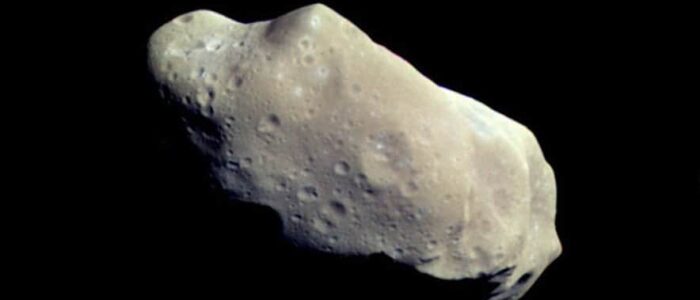2000QW7 is an asteroid nearly the size of world’s tallest building hurtling through space at --,--- (--,---). It will zoom past Earth again in September 2019. The collision risk estimated non-existent, according to NASA. 2000 QW7 is designated with the number 467317 and is part of the Amor family of asteroids.
Where is Asteroid 2000 QW7 now?
3D Web App
2000 QW7 circles the sun in an large orbit that occasionally crosses Earth’s. Currently it’s --,--- from us, getting--,--- --,--- us every second. It flies past Earth at an incredible speed, at --,---. Earth has infrequent encounters with this asteroid and its orbit is currently not classified as a collision risk. The next encouter between Earth and this asteroid is Sat, Sep 14, 2019 when 2000QW7 will pass by Earth at 5,346,659 (3,322,260). This is about 14 times the distance between the Earth and the moon. The asteroid is currently 253,607,423 (157,584,347) from it’s rendezvous with earth.
Since midnight last night 2000QW7 --,--- --,---. Since you started looking at this page it is --,--- --,---.
Will it hit or miss Earth?
Fortunately we’ll be able to observe minor planet number 467317 from a distance as it passes earth. It’s currently approaching at a a breathtaking speed of --,---.
Astronomers get excited about this pass as it will be a great opportunity to observe an asteroid that large from such a close distance. Scientists have observed small asteroids at that distance from earth, but it doesn’t happen very often that an asteroid as large as 2000 QW7 passes this close to earth. We might be able to get information on it’s size, shape and maybe even the interior.
The first time the asteroid was discovered as it flew past earth was in the year 2000. After 2000 QW7 approaches earth in September 2019, it will be away from earth until another close approach in 2038.
Potentially hazardous asteroids are defined as space objects that come within 7.5 million km or 4,6 million mi of Earth and measure more than 140 metres (460 feet) in diameter, according to NASA.
*This Interactive 3D Simulation is built on data provided by NASA JPL HORIZONS database for solar system objects and International Astronomical Union’s Minor Planet Center. Distances and speeds are estimates based on this data.
Photo Credit and other: NASA, ESO/S. Brunier, NASA/JHUAPL/SwRI, NASA/JPL-Caltech, JAXA, University of Tokyo & collaborators, UH/IA, Solar System Scope/INOVE CC BY 4.0, Wikipedia/Creative Commons Attribution-ShareAlike License, icons8.com, Péter Eke, NASA/Goddard/University of Arizona/Roman Tkachenko, Wikimedia Commons, Hayabusa 2 Arrival illustration by Akihiro Ikeshita (permission granted), oNline Web Fonts, Font Awesome, Galaxy vector created by stories – www.freepik.com


